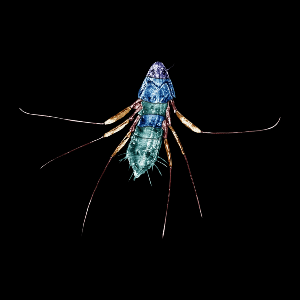
Larva of a wedge-shaped beetle in amber, which could have lived inside other insects like its modern counterparts. | © Carolin Haug
Early life stages of insects fulfill important functions in our ecosystems. They decompose dead bodies and wood, forming soil and returning various elements into material cycles. Not least, they are a major food source for many larger animals such as birds and mammals. This has led to many insect larvae developing structures and strategies for reducing the danger of being eaten. These include features like spines and hairs, but also camouflage and concealment. Over millions of years, a wide variety of such adaptation strategies have developed.
Researchers at LMU and the universities of Greifswald and Rostock have studied particularly well preserved fossils from Burmese amber and have been able to demonstrate that such anti-predator mechanisms had already evolved very diverse forms in insect larvae during the Cretaceous period 100 million years ago. This includes well-known strategies such as that employed by lacewing larvae, which carry various plant and animal materials on their back to give them camouflage, or the ploy of mimicking the appearance of certain plant parts.









